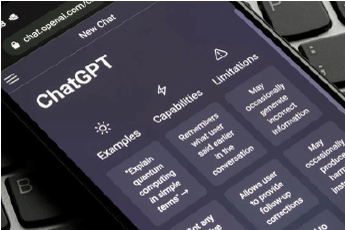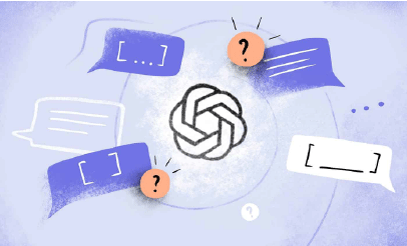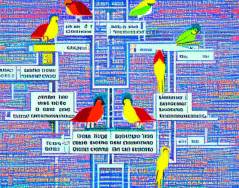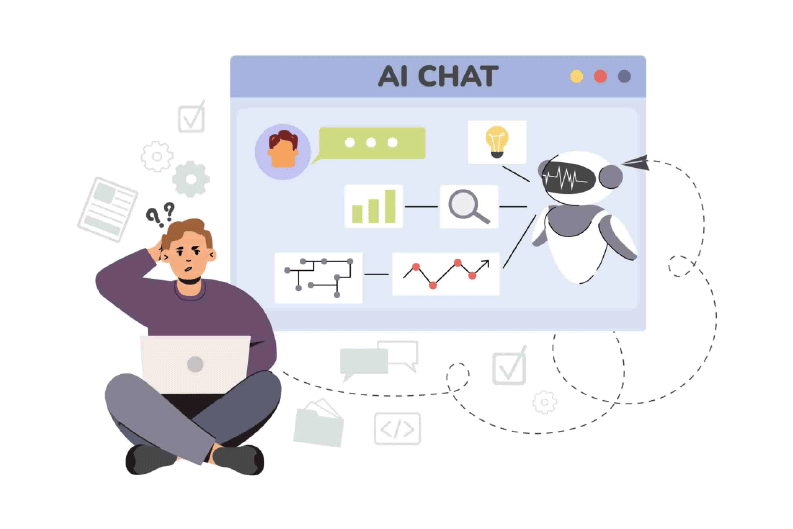- Large language models (LLMs) are advanced artificial intelligence (AI) systems that use deep learning algorithms to process and understand natural language. LLMs, such as GPT-4, have revolutionized how we interact with technology and enabled various applications like text prediction, content creation, language translation, and voice assistants.
- Despite their remarkable abilities, LLMs still have limitations when discussing the future or making predictions outside of their training data, generating false information, reasoning and critical thinking, and abstracting concepts.
- LLMs have been termed "stochastic parrots" because of the debate around whether they simply repeat what they have memorized rather than truly understand the language they generate.
- LLMs are making it possible to revolutionize the way we interact with technology and each other, from text prediction in search engines to content creation tools, language translation, and content generation to chatbots and voice assistants.
- LLMs have enormous potential, but they still have much to learn and develop before they can fully simulate human intelligence and decision-making abilities.
Introduction

Imagine an AI system that can write compelling articles, generate original artwork, and hold intelligent conversations - large language models like GPT-4 are making this a reality.
From Siri to Alexa, chatbots to content generators, large language models are revolutionizing how we interact with technology and each other.
What if an AI system could learn to write like your favorite author or even generate an entirely new genre of literature?
As large language models continue to evolve, their potential applications seem limitless - from improving healthcare to aiding scientific research and beyond.
The power of LLMs is making this possible.

Large language models are advanced artificial intelligence (AI) systems that use deep learning algorithms to process and understand natural language. These models can analyze vast amounts of text data and learn to recognize patterns, which allows them to generate human-like responses to queries and produce coherent pieces of text. The current LLMs, such as GPT-4, have become more advanced and have enabled various applications such as text prediction in search engines, writing assistants, content creation tools, language translation, and content generation to chatbots and voice assistants.
Move over Shakespeare; there's a new literary genius in town - LLMs like GPT-4 with the ability to generate compelling prose, poetry, and even entire novels - seem remarkably creative.
Despite their impressive natural language processing abilities, LLMs still have significant limitations.

LLMs are being termed stochastic parrots because of the debate around whether they are simply repeating what they have memorized rather than truly understanding the language they are generating. "Stochastic" refers to the random nature of the model's output. At the same time "parrot" implies that the model is simply repeating what it has learned without any fundamental understanding of the meaning behind the words or phrases. Essentially, critics argue that LLMs may need to truly comprehend the language they are generating and are instead just regurgitating patterns that they have memorized from their training data.
Essentially, the question is whether they are simply "stochastic parrots" that repeat what they have memorized or have internal language models that go beyond surface-level statistics, such as grammar rules or programming language syntax.
Extrapolability:
Despite their remarkable abilities,
large language models (LLMs) still have limitations when discussing the future
or making predictions outside of their training data. LLMs are less adept when
asked to form hypotheses about the future, as they primarily rely on patterns
and data from the past to generate responses. This can result in the model
struggling to generate original or creative ideas when asked to speculate about
future events.
Instead, LLMs seem to draw on what
others have said or written, which can limit their ability to create new
hypotheses or predictions. As such, while LLMs have made significant strides in
natural language processing and other applications, they still have much to
learn and develop before they can fully simulate human intelligence and
decision-making abilities.

LLMs are notorious for generating false information. Known as "hallucination," this issue arises because these systems do not possess a human-like understanding of truth and falsehood. For example, when asked for information sources and references on a particular topic, LLMs generate nonexistent internet addresses and reference sources. This can be particularly problematic in fields such as healthcare or finance, where incorrect information could have serious consequences.
To address this issue, researchers are exploring a range of solutions, including the integration of external knowledge sources, the development of new techniques to better understand the context and intent behind user queries, and the use of more advanced language models that are better able to make inferences and generate more relevant responses.
Despite their enormous potential, LLMs still have significant limitations when it comes to reasoning and critical thinking. LLMs can struggle with abstract concepts or ideas that require logical inferences or higher-order reasoning skills.
This can lead to the model producing inaccurate or irrelevant responses when presented with complex or nuanced information. LLMs produce nonsensical or irrelevant responses when asked to engage in complex reasoning tasks. LLMs struggle to form new hypotheses, make logical inferences, and understand the context.
Inability to Abstract Concepts
This means that while LLMs can generate impressive responses to certain prompts, they may struggle to abstract information to create useful memory for dealing with novel situations or contexts.
Concluding Remarks:
Large language models (LLMs) are transforming the way we interact with technology and each other by generating human-like responses to queries and producing coherent pieces of text. However, LLMs still have limitations, leading to their labeling as stochastic parrots, as they may not comprehend the language they are generating, instead regurgitating patterns they have memorized. LLMs struggle with making predictions outside of their training data, engaging in complex reasoning tasks, and understanding abstract concepts.
Our Office
South Carolina, 29650,
United States


